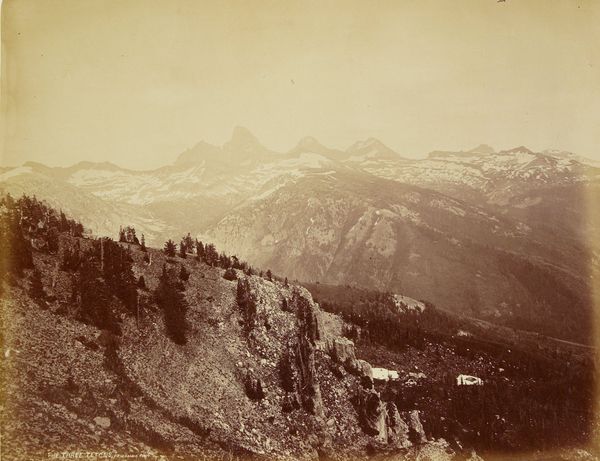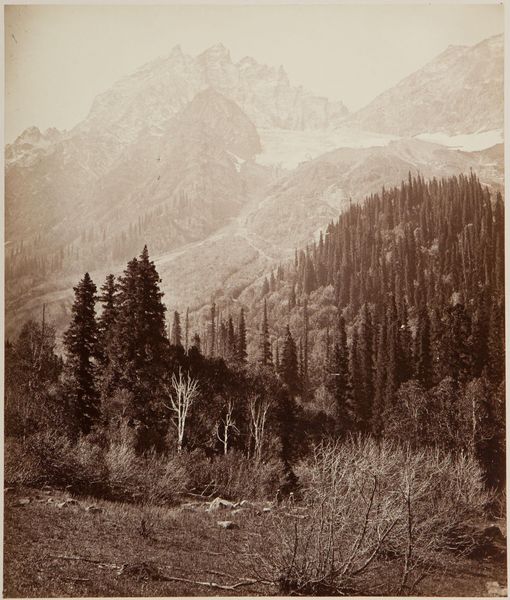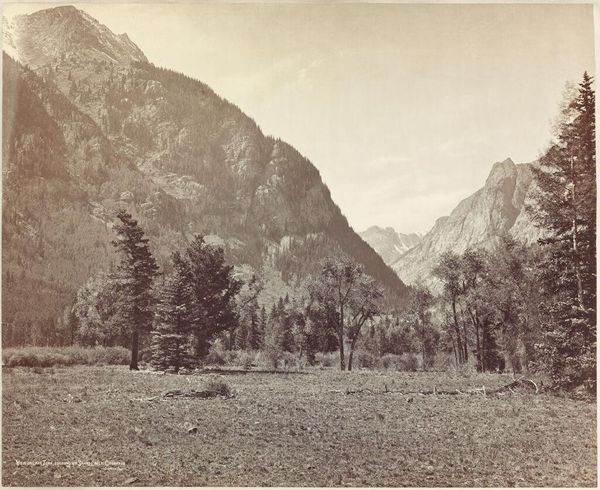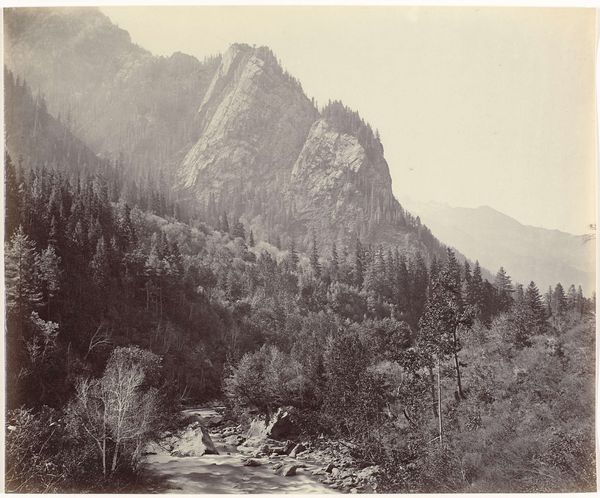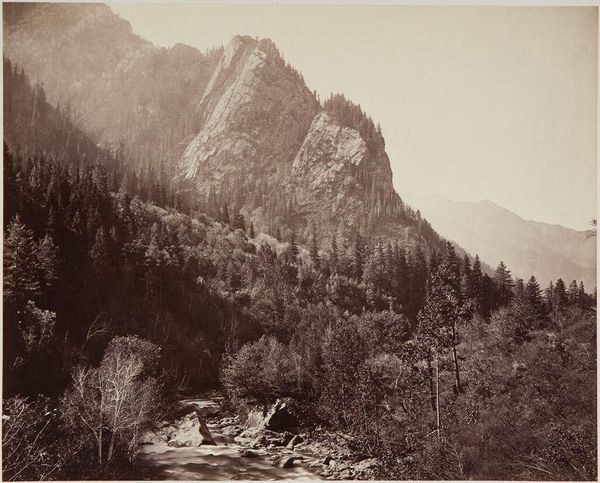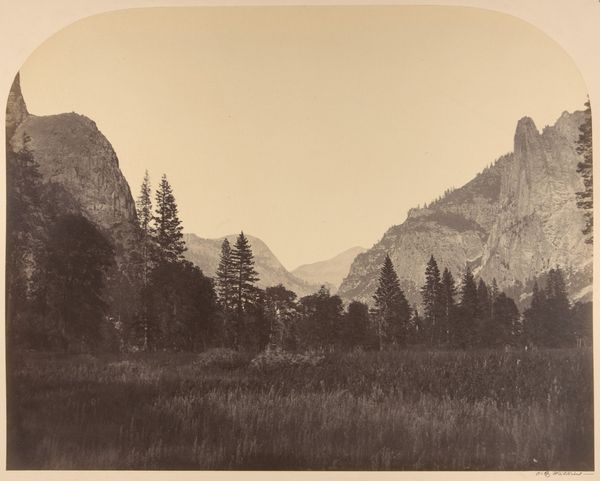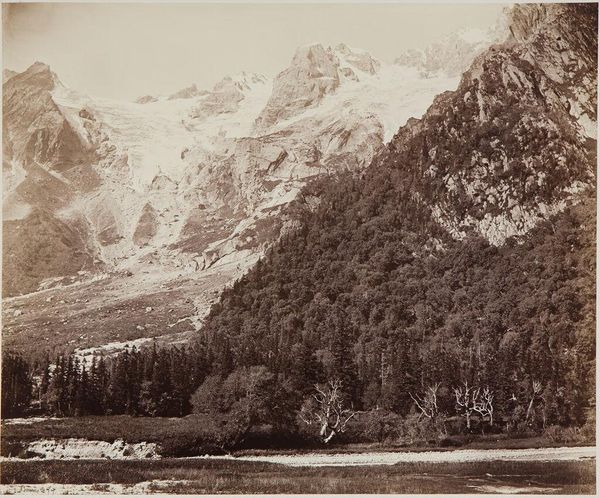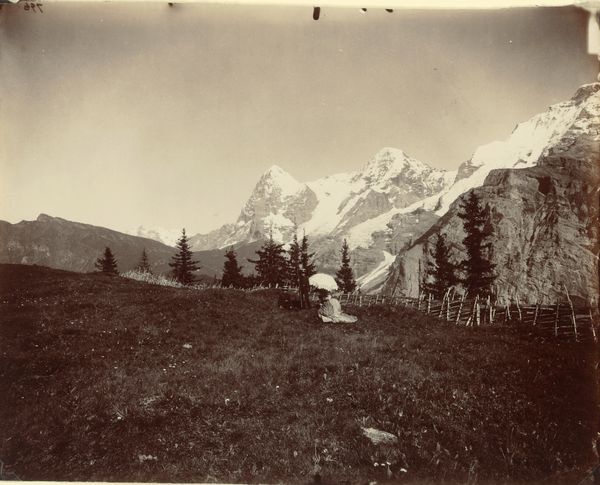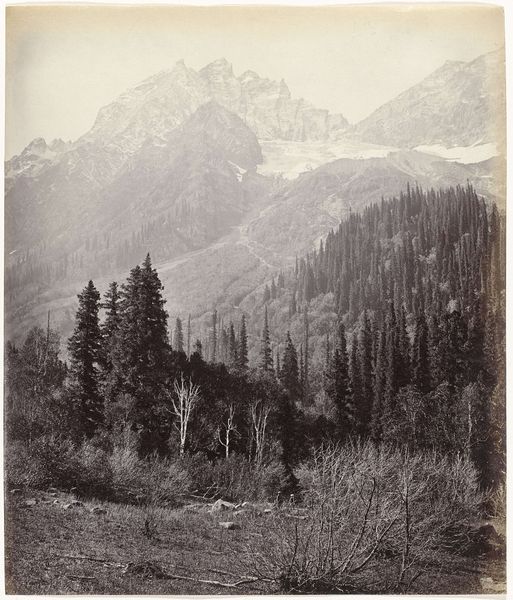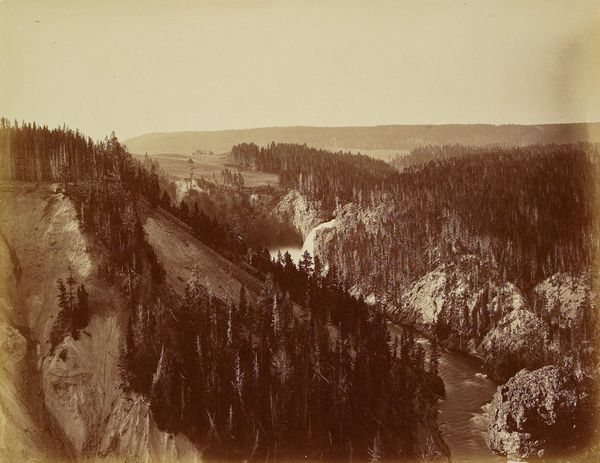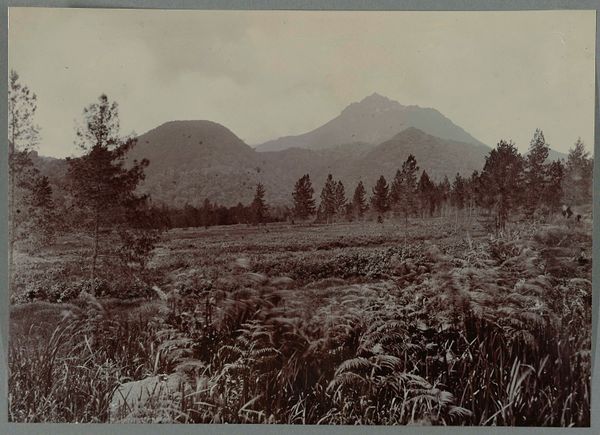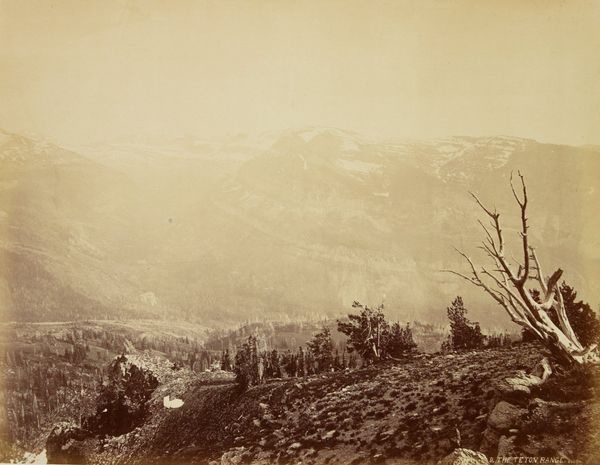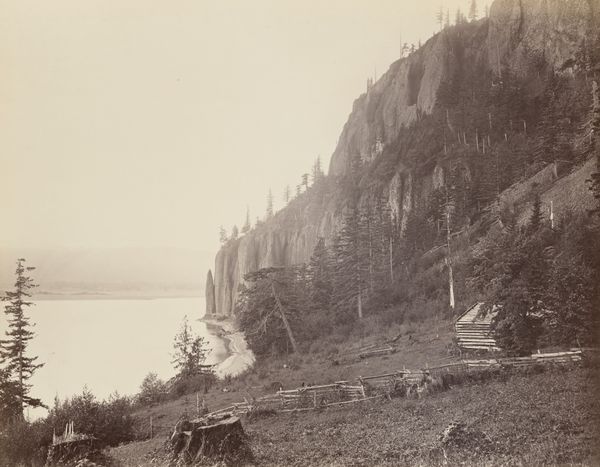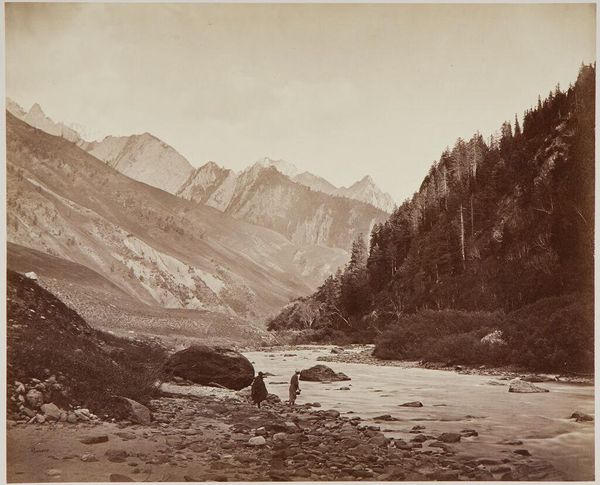
albumen-print, print, photography, albumen-print
#
albumen-print
# print
#
landscape
#
photography
#
hudson-river-school
#
albumen-print
#
realism
Dimensions: 9 15/16 x 12 7/8 in. (25.24 x 32.7 cm) (image)15 1/2 x 19 3/4 in. (39.37 x 50.17 cm) (mount)
Copyright: Public Domain
Curator: Let's spend a few moments with William Henry Jackson's 1873 albumen print, "Camp at the Mouth of the Teton Canyon," currently housed at the Minneapolis Institute of Art. What strikes you most about it? Editor: Vastness, definitely. An almost dreamlike emptiness punctuated by these monumental peaks in the distance. It feels like standing at the edge of the world, like the very air itself is heavy with history, with potential. Curator: It’s interesting you say “emptiness”. Jackson was part of a broader project, the U.S. Geological Survey, which explicitly aimed to chart and therefore make claims *on* these very lands. This image isn't empty to those invested in Western expansion; it’s full of possibility. Editor: Oh, I get that – the irony of claiming "emptiness" to justify taking. But look at the composition! It almost pulls the rug out from under that narrative. Those delicate tents, swallowed by the landscape, feel incredibly vulnerable. Almost a bit sad, like a child trying to play house in a cathedral. Curator: That vulnerability you perceive, though, played a specific role in persuading Eastern audiences. Jackson’s photographs helped secure Yellowstone as the first national park. Presenting the West as awe-inspiring, yet manageable, was key. The albumen print itself – with its crisp detail and subtle tonal range – offered a vision of clarity and control. Editor: True, but there's a tension, isn’t there? This landscape is so monumental, it can't be completely controlled. Even in this rather formal composition, there's still something untamed lurking, some whisper of resistance to that neat and tidy narrative. Those distant peaks are stubbornly indifferent to the human drama unfolding in the foreground. They’re almost…laughing? Curator: Perhaps "laughing" is a bit strong. But, in a sense, the inherent sublimity does complicate the message. Jackson sought to depict the West in a way that bolstered settlement and resource extraction. He wasn’t a radical questioning manifest destiny, but the picture can be read today against that project, the collision between ambition and raw geologic power is undeniable. Editor: Well said! Looking again, there's such depth to that field between the viewer and the tents... like looking into a past that shifts with our perception. The way forward seems so open, so free, until we recall all the conflict baked into its earth. I'm leaving this feeling grateful and yet uneasy. Curator: Indeed, this image allows us to reflect upon the complex layering of perspectives in these Western landscapes—then and now. It certainly inspires contemplation.
Comments
No comments
Be the first to comment and join the conversation on the ultimate creative platform.
